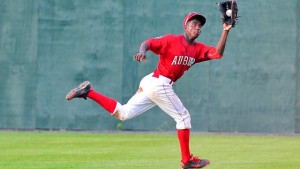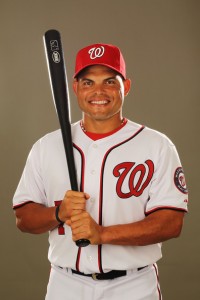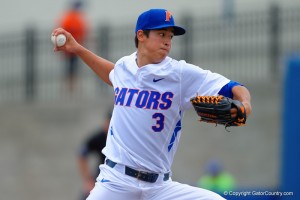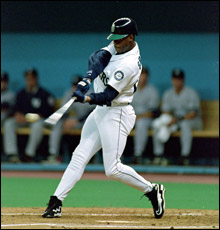The two prospect experts at Fangraphs (Kiley McDaniel and Eric Longenhagen) have released their prospect list for the Nats farm system for the 2018-19 off-season, ranking 22 guys using FAngraphs somewhat unique ranking system.
The link is here: https://www.fangraphs.com/blogs/top-22-prospects-washington-nationals/
This is the first publicly available ranking of the off-season of our prospects (Baseball America released their top 10 last week, but its entirely behind a pay-wall that I havn’t brought myself to pay for yet). But its also a very interesting look into the evolution of the Nats system.
Our top 5 really isn’t surprising: Victor Robles, Carter Kieboom, Luis Garcia, Mason Denanburg and Wil Crowe. Most of us could have probably made that list from memory, knowing what we know about our depth. Also not surprising; the dropping of Seth Romero and Raudy Read (who was not even mentioned in the top 22). Romero likely doesn’t pitch again until Spring of 2020, and Read’s suspension and subsequent stacking of Catchers on top of his head by the big club essentially buries him in the minors for another season save a massive spate of injuries.
Other interesting omissions: Jake Irwin, who was #10 on BA’s list but doesn’t make Fangraph’s list. Jackson Tetreault‘s stock has plummeted; he was once on the breach of being a top 10 prospect for the system and now isn’t even being mentioned.
Nick Raquet, our 2017 3rd rounder, also does not appear anywhere in this list despite his slot-value bonus that year. He joins a less-than-illustrious history of 3rd rounders by this organization (year by year starting with 2018 Reid Schaller, Raquet, Jesus Luzardo, Rhett Wiseman, Jakson Reetz , Drew Ward, Brett Mooneyham. Matthew Purke, Rick Hague, and Trevor Holder in 2009. For the record, that’s 10 years and one legitimate prospect or guy who worked out (that being Luzardo .. who will succeed for someone else). That’s pretty ridiculous. (2008 was Danny Espinosa, so i don’t want to be accused of arbitrary end-points).
The system still seems kind of top-heavy; 3-4 sure things, then a bunch of question marks. i”d guess we’re ranked in the 16-20 range among the 30 teams as a system.
Lets be more positive; there’s a slew of names on this 2019 Fangraphs list who have literally never been mentioned on any other list that i’ve tracked. So lets focus on them:
- #9 Israel Pineda, an 18yr old Catcher who just held his own in Short-A against a bunch of guys 3 years his senior. Maybe we’re finally developing a catcher that can make it?
- #11 Tanner Rainey: our trade bounty in the Tanner Roark salary dump. He’s not much of a “prospect” in that he’s 26 and is a AAA/4-A guy already. But he does have a big arm and seems like he could be a 6th/7th inning solution soon.
- #12 Malvin Pena, a 2014 IFA signing who signed for so little that he’s not even mentioned in the press releases from the time (meaning, he probably signed for like $5k). Fangraphs complains about his mechanics, but he walked just 7 guys in 50 innings this year while making it to Low-A as a 21 yr old who has lost two full seasons to injury). I think he starts in the Low-A rotation again in 2019 as they build his innings back up and see if he can improve on his already decent 2018 performance.
- #17 Taylor Guilbeau: we just talked about him with Rule-5; he was eligible but didn’t get picked, despite switching to the bullpen and halving his ERA. I think he appears on this list mostly due to his AFL performance. I’m hoping he quickly becomes a LOOGY option for the big-league club in perhaps a year and a half or so.
- #18 Jeremy De La Rosa, a $300k IFA signing this past June, and already on the list. The thing that I noted: 6’1″ and he hasn’t turned 17 yet.
- #19 Jordan Mills, another guy I thought took great strides forward in 2018 and was a Rule5 threat to get drafted. He’s a step ahead of Guilbeau in terms of being an option for the big club; not bad for a MLFA signing a year ago.
- #20 Joan Adon, part of the massive 2016 IFA class, but probably paid a pittance compared to the 6- and 7-figure deals there. Now 20, he fared pretty well in the GCL then struggled in Short-A. He’ll be in his age 20 season in 2019 so he’s a bit ahead of the curve as compared to (say) a college-age draftee who is his same age. No matter; he’s the 20th ranked prospect on a list where usually only guys in the top 4-5 ever make the majors.
- #21 Ben Braymer, one of my favorite Nats prospects right now. 18th rounder in 2016, he solved two successive lower levels in two successive years, then went to the AFL this past October. He’s still a year away from Rule-5 but signed for relatively nothing ($100k bonus in the 18th out of Auburn).
fyi, here’s an updated link to my now massive Nats prospects Rankings xls: https://docs.google.com/spreadsheets/d/1rTcspPOLJH685G9PUlmTlHU1g9AtlX4-Z9pOWP92Ne8/edit?usp=sharing
It now has more than 125 system rankings dating to the beginnings of the franchise in Washington.



